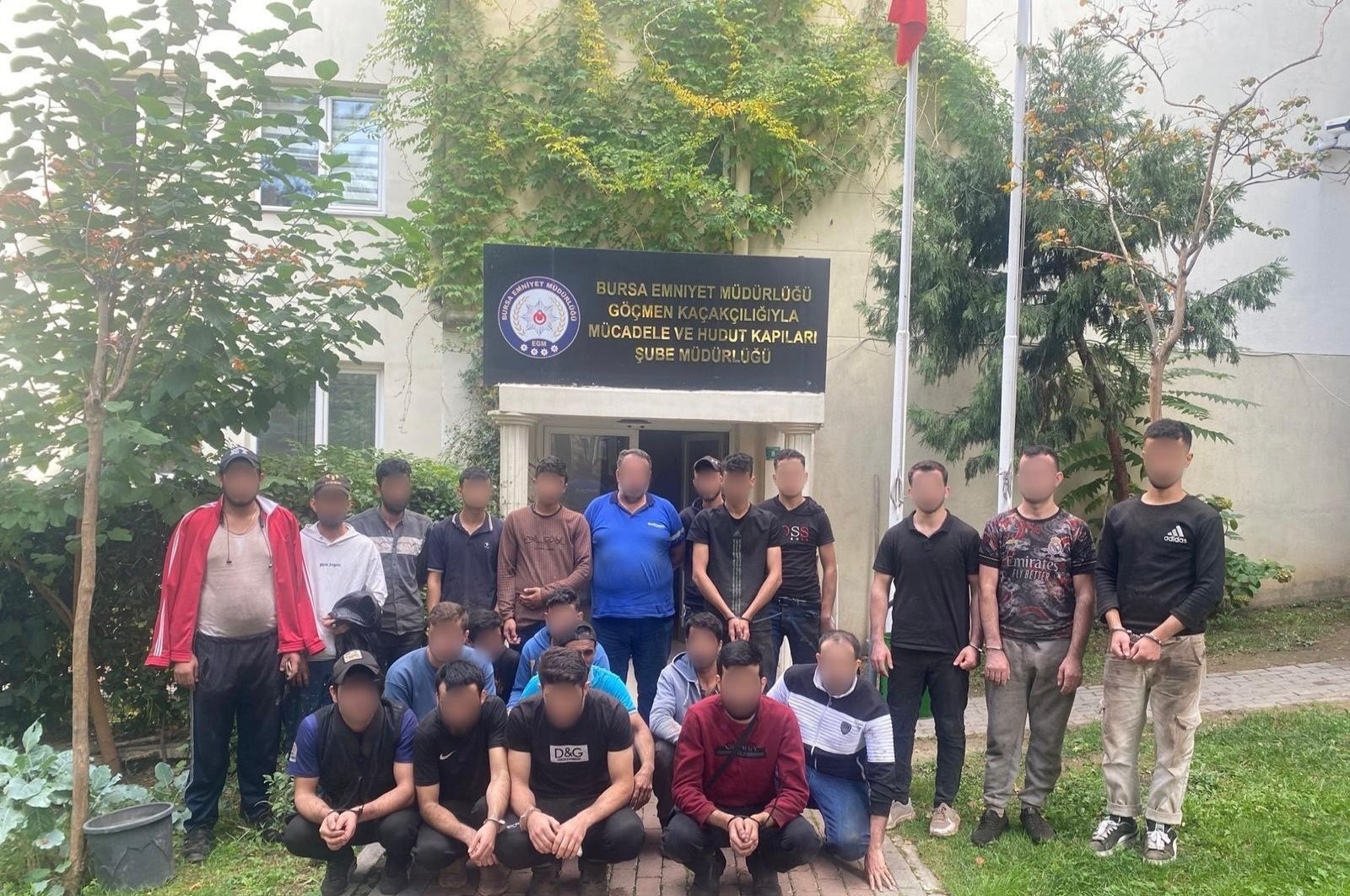
Türkiye have captured over 4,040 irregular migrants and some 200 smugglers in the past month, Interior Minister Ali Yerlikaya said Tuesday as the country intensifies its crackdown on illegal arrivals spurred by war and economic hardships.
Turkish police and gendarmerie forces have conducted nonstop operations across the country in September, Yerlikaya said on X.
Authorities arrested 82 of the smugglers and released 31 others on probation, Yerlikaya said, adding that some 107 vehicles used for smuggling were also seized during raids.
Proceedings are underway for other suspects while the migrants have been delivered to provincial migration directorates for deportations, the minister said.
Türkiye has been a migration destination, especially in the 1980s, and currently hosts more than 4.4 million residents of foreign origin. It hosts more than 3.1 million Syrians under temporary protection, while another 228,290 people stay in the country under the status of international protection. The latest figures show it hosts more than 1.1 million people with residence permits.
Irregular migration, however, escalated as undocumented migrants, those arriving under the condition of limited stays, illegally outstaying, are growing in numbers.
Though the number varies over the years, Afghans and Syrians make up the bulk of intercepted irregular migrants. Palestinian migrants and migrants from Turkmenistan, Morocco, Uzbekistan, Iraq, Iran, Egypt and Sudan usually follow them in statistics.
European countries have remained attractive to migrants from African and Asian countries in the past decade and Türkiye is a transit route for thousands of asylum-seekers looking to cross over to Greece from its western coasts.
The sea route is naturally the main choice of migrants, but it is also the most dangerous as the Mediterranean waters are not always safe for boats, let alone dinghies, a cheap way of transportation for most migrants.
Tricked by migrant smugglers to take the short route from Türkiye to Greece, migrants barely make it to the Greek waters before their boats are either caught or in danger of sinking amid bad weather.
The number of intercepted irregular migrants has been on the rise since 2020, in proportion to more efficient work by the coast guard.
In 2020, the coast guard intercepted 20,380 irregular migrants, while this number rose to 23,676 in 2021.
In 2022 and 2023, the number was 49,518 and 56,954, respectively. Along with migrants, smugglers organizing their crossing and profiting off the desperate batches of migrants increased.
In 2023, 169 smugglers were captured while this number was 293 in 2022, 113 in 2021 and 53 in 2020.
Türkiye has been taking new measures at its borders to prevent a fresh influx of migrants, balancing a humanitarian policy and the need to stop thousands from risking their lives.
As part of recently revived talks to mend long-tense bilateral ties, Greece and Türkiye are floating a renewal of a 2016 EU deal restricting migration.
Earlier this month, Ankara signed a deal with Iraq on the voluntary return of Iraqi citizens in Türkiye.
"As part of the memorandum of understanding, which aims for a more sustainable and secure approach to migration management, cooperation will be undertaken to prevent irregular and illegal migration effectively," Yerlikaya’s office said.
Türkiye is also reinforcing its eastern borders against illegal crossings, notably as Iran last month unveiled plans to deport some 2 million undocumented migrants by the end of March. Ankara hit out claims that these would be sent to Türkiye.
In Van, the eastern province where Türkiye has the longest border with Iran, security measures are highest against irregular migration, smuggling and infiltration by terrorists.
A concrete wall straddling a line of about 180 kilometers (112 miles) is still under construction, with construction completed in most places. Elsewhere, towers fitted with thermal cameras and other high-tech surveillance equipment oversee the line.
